Dr. Gismero Moreno, Saturnino
Jefe de servicio
Oftalmólogo especialista en Retina
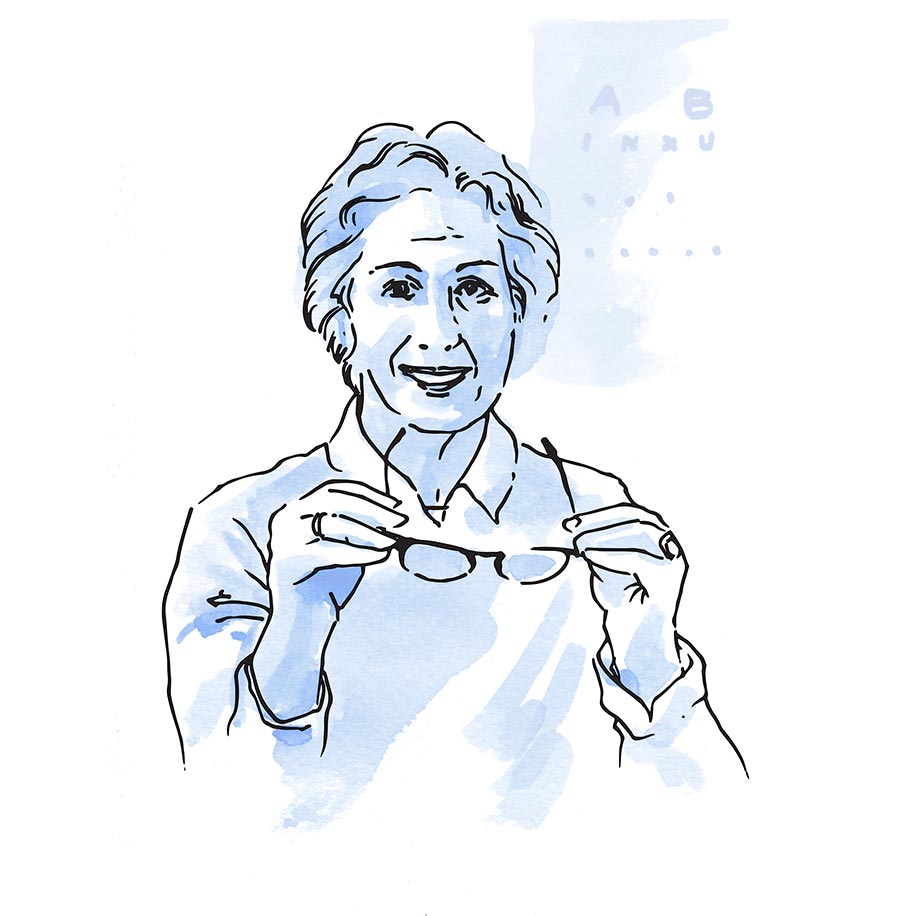
Eine präzise und genaue Diagnostik garantiert die Auswahl der am besten geeigneten Behandlung für jeden Fall.
Dafür setzen wir auf ein Team von Ophtalmologen mit einer umfangreichen Erfahrung bei Fällen von höchster Komplexität und auf die modernste technologische Ausstattung.
Spezialisiertes Wissen und hochmoderne Technologie für die Gesundheit Ihrer Augen.
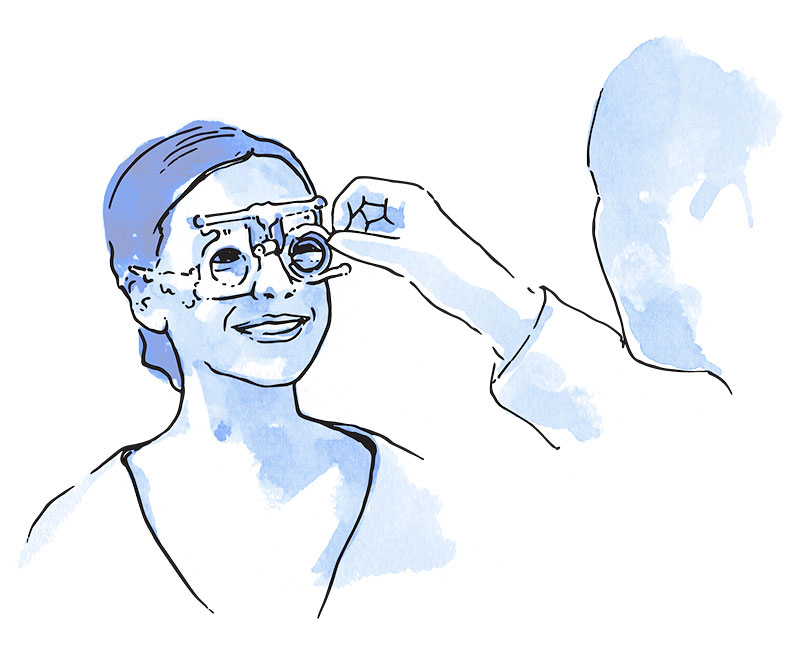
Ein Optometrist ist eine Fachkraft, die bestimmte Sehprobleme voraussieht, diagnostiziert und korrigiert.
Die Rolle der Optometrie geht über die Verschreibung von Sehhilfen hinaus. Ein Optomitrist erkennt auch bestehende Beeinträchtigungen der Sehfähigkeit, beurteilt die visuelle Funktion und die Strukturen des Auges. Er führt Sehtherapien und Therapien bei Sehschwäche durch, ist verantwortlich für die Anpassung von Kontaktlinsen oder die Beratung im Hinblick auf die Hygiene der Augen und nützliche Gewohnheiten im Zusammenhang mit der Augengesundheit.

Optische Kohärenztomographie (OCT)
Es handelt sich um eine nicht-invasive bildgebende diagnostische Methode mithilfe derer man sowohl den Glaskörper und sein Verhältnis mit der inneren Oberfläche der Netzhaut, als auch die verschiedenen Schichten der Netzhaut untersuchen kann. Mit den neuesten Geräten kann zudem die Choroidea (Aderhaut) dargestellt werden. In klinischen Setting ist diese Technik nützlich zum Diagnostizieren und Begleiten einer großen Bandbreite verschiedenster Erkrankungen der Netzhaut, wie Glaukomen und bestimmten Erkrankungen der Hornhaut des Auges.
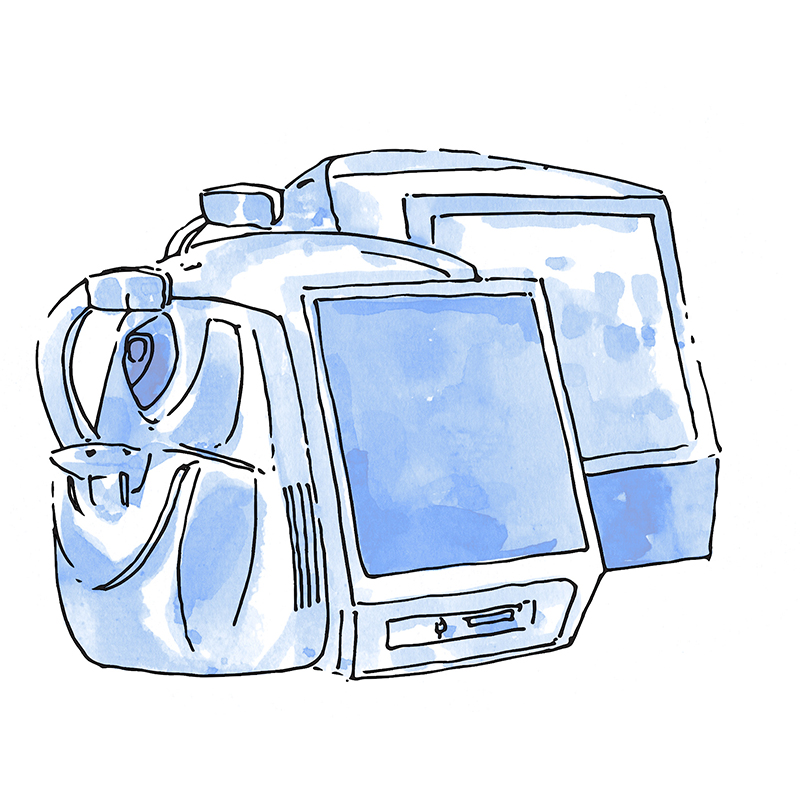
Optische Kohärenztomographie-Angiographie (OCT-A)
Ermöglicht innerhalb von Sekunden das nicht-invasive Erstellen von Bildern der retinalen Mikrovaskularisierung und der Choroidea. Hierdurch kann die Diagnosenstellung, die Betreuung und Planung der Behandlung okularer Erkrankungen wie dem Glaukom oder Erkrankungen der Retina erleichtert werden. Dieses Verfahren ermöglicht es, einen an die spezifischen Bedürfnisse eines jeden Patienten angepassten Behandlungsplan zu erstellen.
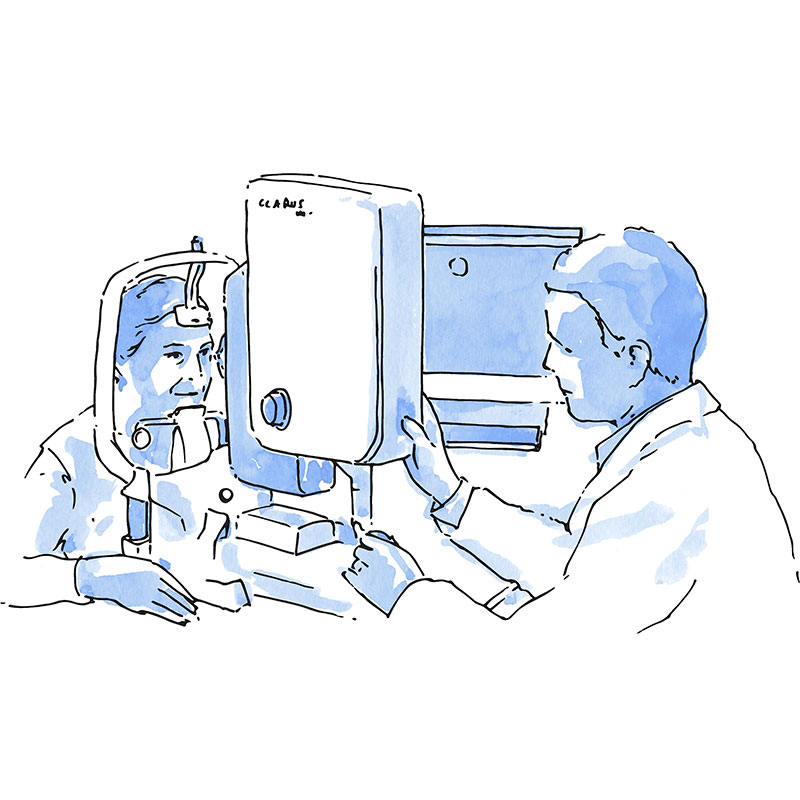
Ultra-Weitwinkel-Netzhautbildgebung
Retinographien sind Bildern des Augenhintergrundes, welche schnell und unkompliziert erstellt werden können. Sie helfen dabei, auf einfache Art und Weise eine komplette Untersuchung der Netzhaut durchzuführen. Die Bilder sind dafür geeignet, digital archiviert zu werden, was den Vergleich zwischen neu erstellten mit schon älteren archivierten Bildern ermöglicht. Dieses ist sehr hilfreich, um die Entwicklung bestimmter Erkrankung wie Netzhautablösungen, altersabhängige Makuladegenerationen (AMD), Glaukome, etc. zu dokumentieren.
Die Ultra-Weitwinkel-Netzhautbildgebung bedeutet eine technologische Weiterentwicklung im Vergleich zur konventionellen Bildgebung. Sie ist in der Lage, umfassendere Bilder der Netzhaut darzustellen, was sie zu einer ausgereifteren Untersuchungsmethode macht.
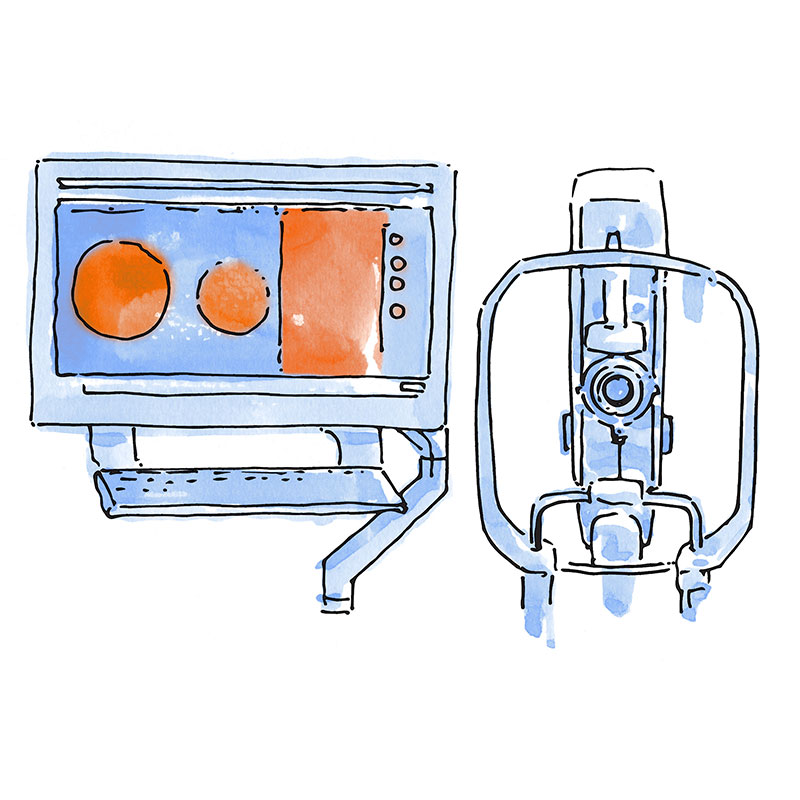
Autofluoreszenz
Diese Untersuchungsmethode liefert uns ohne die intravenöse Anwendung von Kontrastmitteln zusätzliche und sehr wertvolle Informationen für die Diagnosestellung von Erkrankungen, die hauptsächlich das Pigmentepithel der Netzhaut betreffen.
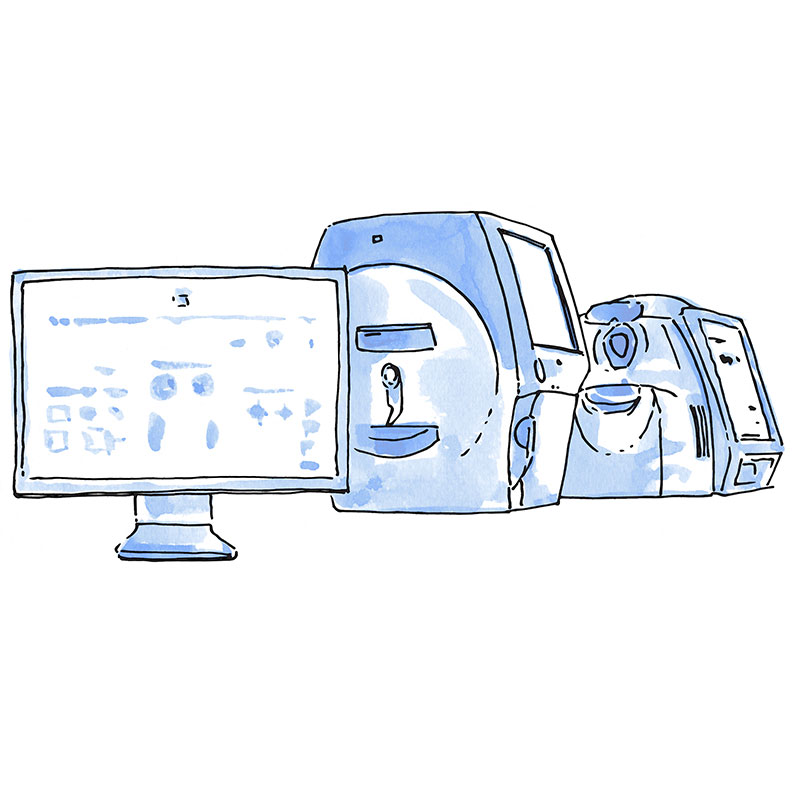
Dieses diagnostische Verfahren ermöglicht es, das Ausmaß des peripherem oder lateralem Gesichtsfeld zu messen. Während dabei fest auf einen bestimmten Punkt oder ein Objekt geschaut wird, können Erkrankungen im Bereich des Sehfeldes aufgrund von Veränderungen am Sehnerv oder der Netzhaut erkannt werden. Dieses Verfahren ist besonders indiziert bei der Diagnosestellung und Verlaufskontrollen von Glaukomen und anderen Erkrankungen, welche die Sehbahn oder die Netzhaut betreffen.
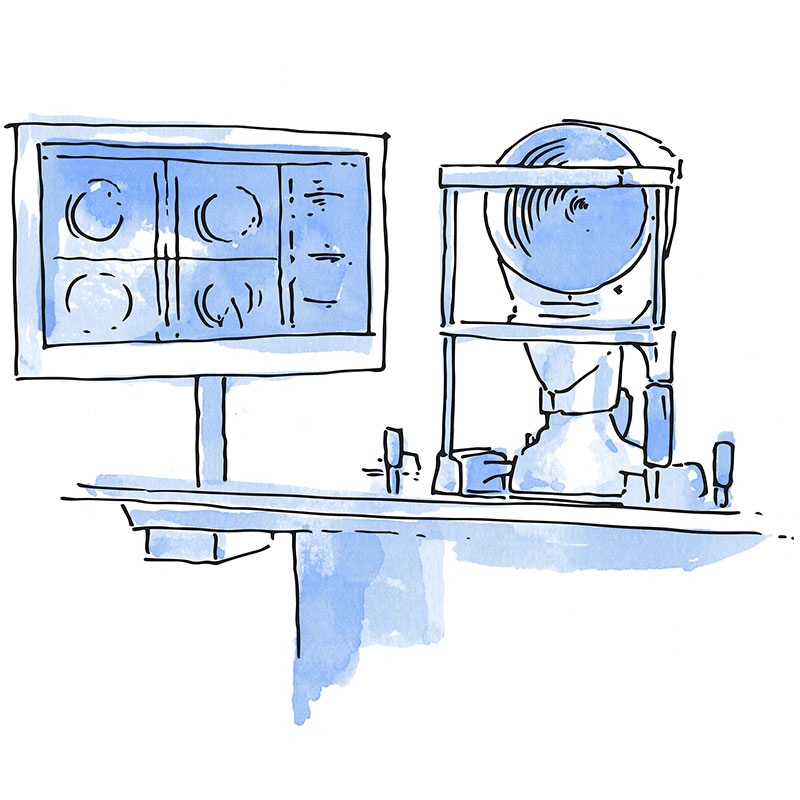
Die korneale Topographie ermöglicht es uns, die Struktur der Kornea wenig invasiv zu untersuchen. Sie liefert uns Informationen über die Form, die Wölbung und die Dichte der Hornhaut. Sie wird nicht nur zur Diagnose eingesetzt, sondern auch als präoperative Untersuchung und zur Begleitung bei bestimmten chirurgischen Eingriffen. Sie hat einen großen Nutzen bei Hornhautdystrophien oder beim Einsetzen von Intraokularlinsen bei Katarakt-Operationen.
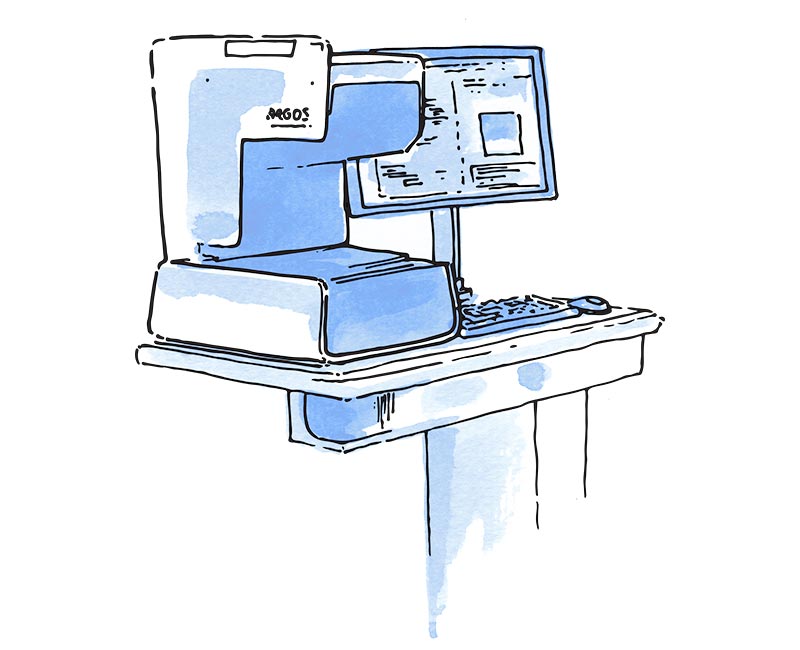
Die Biometrie ermöglicht es uns, den Augapfel sehr präzise zu vermessen. Sie liefert uns Daten wie:
Es handelt sich hierbei um eine Standard-Untersuchung bei Patienten, bei denen eine Katarakt- oder eine refraktive Operation durchgeführt werden soll.
Es gibt zwei Techniken für eine Biometrie der Augen:
Optische Biometrie
Sie ist die am häufigsten durchgeführte Biometrie. Die Berechnung der Distanz der Augenstrukturen wird mit Hilfe infraroten Lichts vorgenommen, welches das Auge durchdringt. In HC arbeiten wir mit dem Biometer Argos von Alcon, dem fortschrittlichsten im Bereich der optischen Biometrie. Er ermöglicht es uns, die besten chirurgischen Resultate zu erzielen.
Ultraschall-Biometrie
Sie wird normalerweise durchgeführt, wenn bei schweren Blutungen, Verlust der Transparenz der Hornhaut und einer ausgeprägten Trübung der Linse infrarotes Licht nicht mehr durchdringt. In diesen Fällen wird ein Ultraschall eingesetzt, um die Strukturen der Augen zu vermessen.
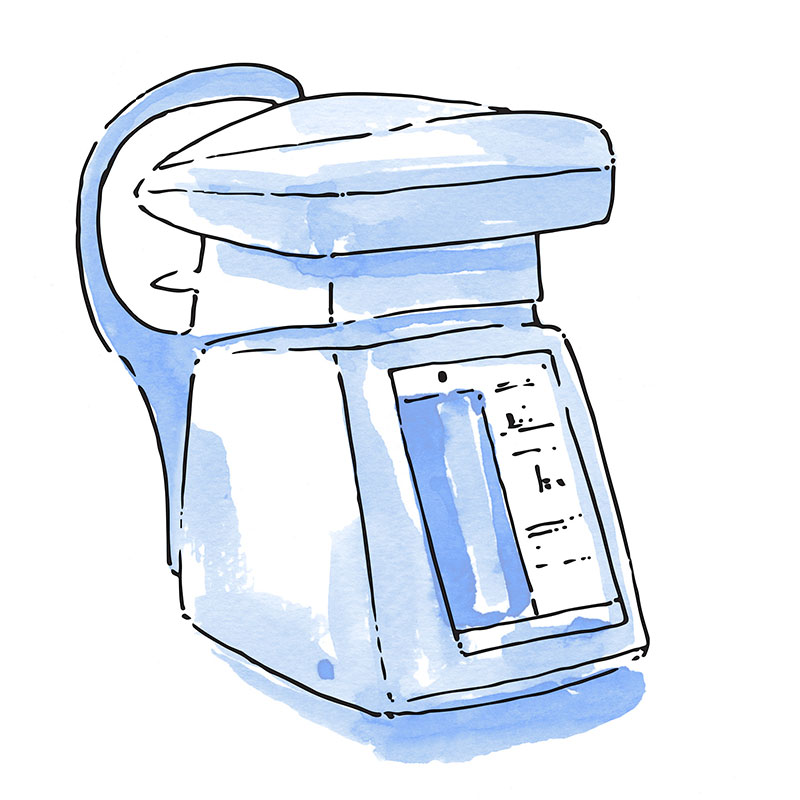
Schmerzlose Untersuchung, bei der mit Hilfe eines Endothel-Mikroskops die Anzahl, Form und Größe der Endothelzellen der Hornhaut bestimmt werden. Mit fortschreitendem Alter oder bedingt durch Erkrankungen oder chirurgische Eingriffe, verändert sich das Gewebe und die Anzahl der Zellen verringert sich.
Normalerweise wird es präoperativ bei Katarat-Operationen oder zur Diagnose und Kontrolle bei degenerativen Veränderungen der Hornhaut eingesetzt.
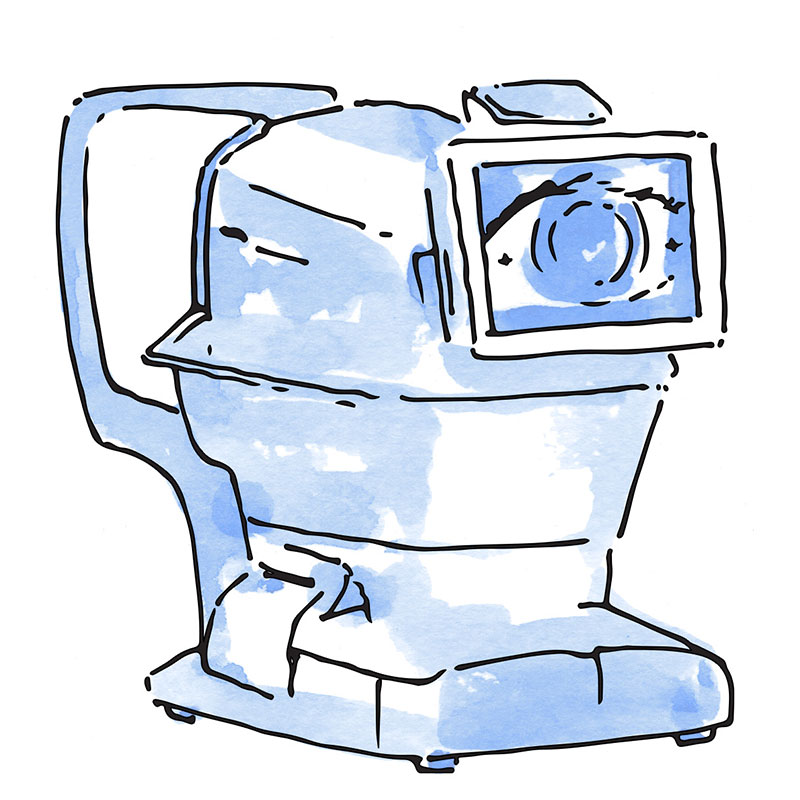
PEs handelt sich um eine diagnostische Untersuchung zur Messung der Hornhautdichte mit Hilfe von Ultraschall. Die Hornhautdichte kann ebenfalls mit der optischen Kohärenztomographie (OCT) gemessen werden. Es handelt sich um eine einfache Untersuchung, die 5 Minuten dauert, und in der analgetische Augentropfen erforderlich sein können, falls der Augenarzt den Kontakt mit der Augenoberfläche benötigt, um die Messung durchzuführen. In HC ist dieses dank der verwendeten Technologie nicht erforderlich.
Vor bestimmten chirurgischen Eingriffen, wie bei Glaukomen oder Kataraten, ist es wichtig, die Dicke der Hornhaut des Patienten vorher zu bestimmen. Dieses ist zudem wichtig bei der Begleitung verschiedenster Erkrankungen der Hornhaut oder bei Glaukomen.
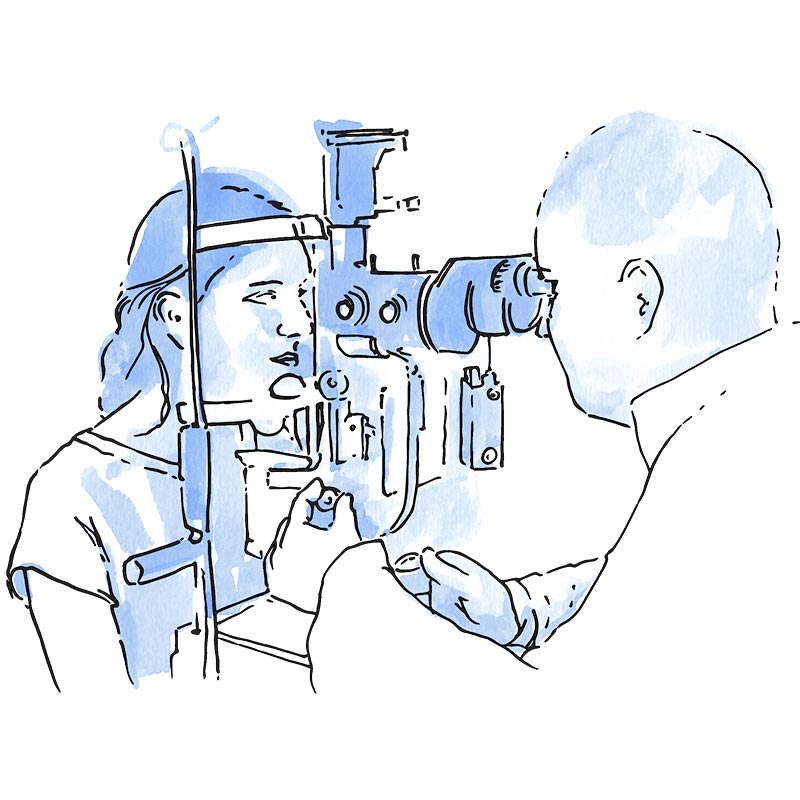
Biomikroskopie des vorderen und hinteren Augenabschnitts.
Es handelt sich um eine Untersuchung mit Geräten, die wie Mikroskope arbeiten und vom Augenarzt in der Praxis selbst angewendet werden können.
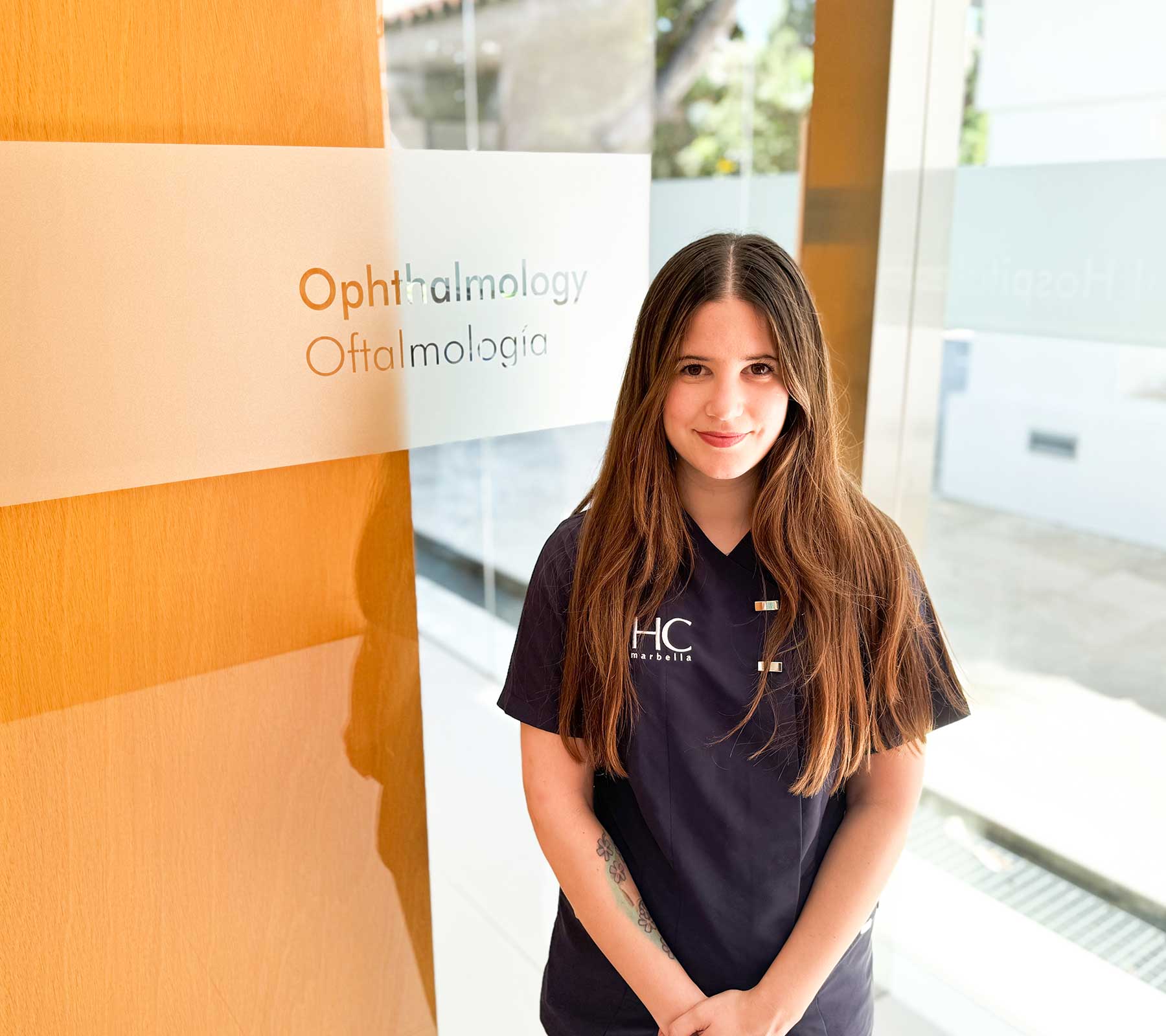
Dr. Gismero Moreno, Saturnino
Jefe de servicio
Oftalmólogo especialista en Retina
Dr. Alberte González, Antonio
Oftalmólogo
Especialista en Glaucoma
Dr. Flores Márquez, Ana
Oftalmóloga especialista en retina médica
Dr. Álvarez López, Alejandro
Cirugía oculoplástica y orbitaria
Partal, Carlos
Óptico y optometrista clínico
Tel.: +34 952 908 628
+34 609 148 799
952908898 Onkologie
951829978 Bildgebende Diagnostik
951829947 Gynäkologie
952908897 Fertilitäts-Zentrum
951829947 Physiotherapie